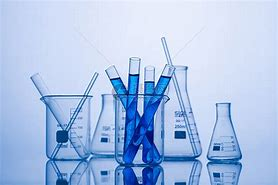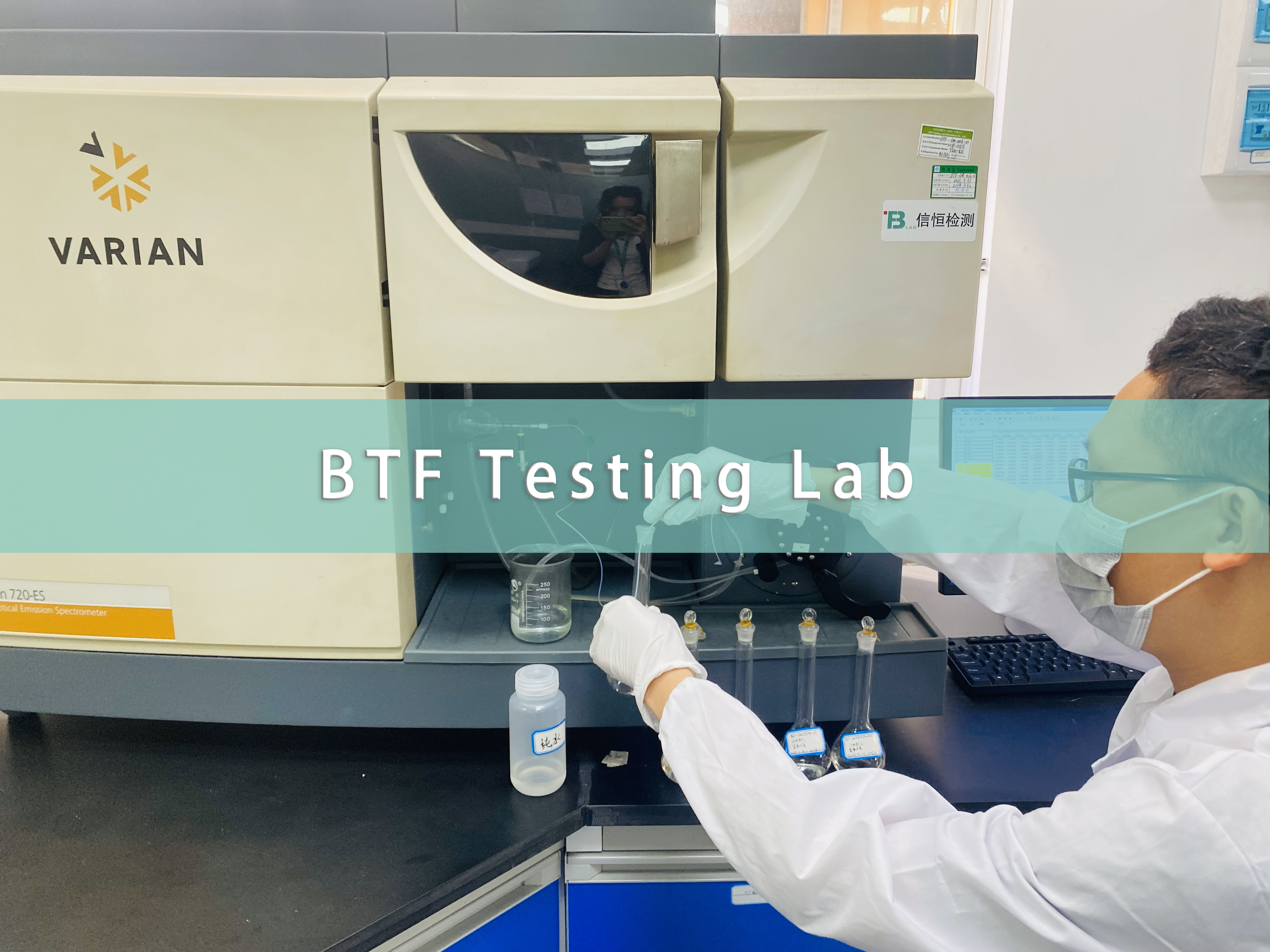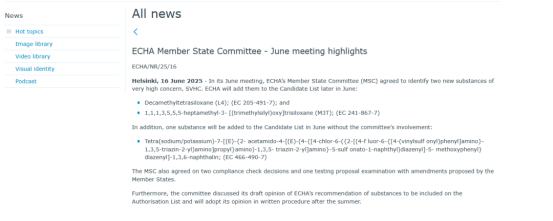On June 16, 2025, the European Chemicals Agency (ECHA) announced an important news that at the 90th meeting of the Member States Committee (MSC), it was agreed to include three substances in the new batch of SVHC candidate substance lists. It is expected that after the update of the list at the end of June, the number of highly anticipated SVHC candidate list substances will climb to 250.
The three newly added substances to the REACH SVHC candidate list are:
Decamethyltetrasiloxane (L4)
EC No. :205-491-7
CAS No. :141-62-8
Common uses: Mainly used as a sealing agent for synthesizing organic silicone oil and silicone rubber, and can also be used as a viscosity modifier for low viscosity silicone oil and low viscosity silicone oil.
1,1,1,3,5,5,5-heptamethyl-3-[(trimethylsilyl)oxy]trisiloxane(M3T)
EC No. :241-867-7
CAS No. :17928-28-8
Common uses: Used for washing and cleaning products, cosmetics and personal care products, automotive care products, paints, coatings, adhesives, etc.
Tetra(sodium/potassium)-7-[(E)-{2-acetamido-4-[(E)-(4-{[4-chlor-6-({2-[(4-f luor-6-{[4-(vinylsulf onyl)phenyl]amino}-1,3,5-triazin-2-yl)amino]propyl}amino)-1,3,5- triazin-2-yl]amino}-5-sulfonato-1-naphthyl)diazenyl]-5- methoxyphenyl}diazenyl]-1,3,6-naphthalin
EC No. :466-490-7
CAS No. :–
Common uses: textile processing products and dyes.

Since the implementation of the REACH regulation, we have been committed to comprehensive and strict management of chemicals, with the SVHC list occupying a central position. The substances on the list pose a serious threat to human health and the ecological environment due to their carcinogenic, teratogenic, reproductive toxicity, or persistent, bioaccumulation, and toxicity characteristics, and are therefore subject to strict control. The three newly added substances, although their specific information has not been fully disclosed yet, can be foreseen to come from multiple different fields. Their addition will undoubtedly pose more stringent compliance challenges for related industries in product production, import and export.
According to EU requirements, products entering the EU market that contain SVHC candidate substances exceeding 0.1% should be reported in the SCIP database, and the notification should identify the single item with SVHC exceeding 0.1% in complex products and locate its position in the complex item. To ensure that products exported to the EU comply with REACH regulations, SVHC testing is necessary as these substances are considered to have serious or irreversible effects on human health or the environment.
What are the risks of violating REACH regulations?
If the reporting obligation is not fulfilled or the SVHC content of the product exceeds the standard, there will be risks such as product recall, fines, and restricted market access. SVHC may be included in the authorization list and requires prior authorization before it can continue to be used.
Reminder:
According to the mandatory provisions of the EU Regulation on the Registration, Evaluation, Licensing and Restriction of Chemicals (REACH), the regulatory scope of this regulation covers various types of chemical raw materials and their derivatives, including but not limited to toys, clothing, shoes, electronic devices and other commodity fields. Goods exported to the European Union must meet both the regulatory requirements for substances of high concern (SVHC) and the restrictions on prohibited substances specified in Annex XVII. Currently, for SVHC compliance verification of items, the smallest constituent unit of the item (i.e. a single material) should be used as the testing object, rather than using the entire machine or finished product as the testing sample.
BTF reminds you:
Pay attention to the updated SVHC list of REACH regulations to ensure timely updates on the latest developments. Strictly monitor product substances according to the latest regulatory requirements to ensure product compliance.
BTF Testing Lab, our company has electromagnetic compatibility laboratories, safety regulations Laboratory, wireless radio frequency Laboratory, battery Laboratory, chemical Laboratory, SAR Laboratory, HAC Laboratory, etc. We have obtained qualifications and authorizations such as CMA, CNAS, CPSC, VCCI, etc. Our company has an experienced and professional technical engineering team, which can help enterprises solve the problem. If you have relevant testing and certification needs, you can directly contact our Testing staff to obtain detailed cost quotations and cycle information!
Post time: Jun-23-2025











